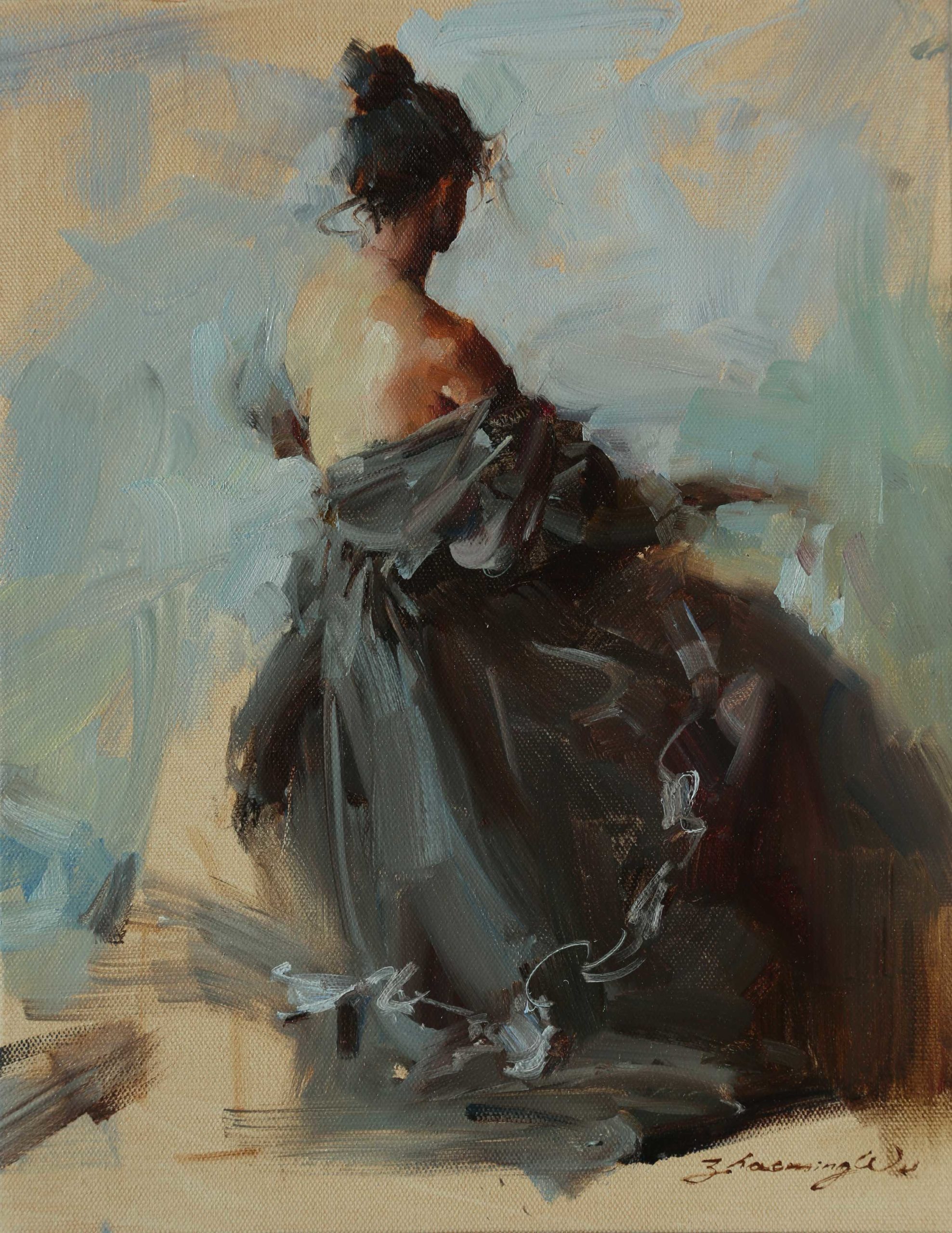Why Figurative Oil Painting Remains a Timeless Option for Artists
Why Figurative Oil Painting Remains a Timeless Option for Artists
Blog Article
The Role of Feeling and Expression in Metaphorical Oil Paint: A Thorough Evaluation of Topic and Composition
The interaction of feeling and expression in metaphorical oil paint works as an essential lens whereby one can examine the complex relationship in between subject matter and make-up. Artists harness various strategies, from color option to brushstroke characteristics, to cultivate psychological resonance within their works. This nuanced orchestration not only shapes audience understanding yet likewise welcomes a much deeper questions right into how these elements coalesce to show the complexities of human experience. As we explore this abundant terrain, one must consider just how specific instance research studies light up the wider effects of these creative selections.
Recognizing Feeling in Art
Feeling in art works as an effective channel for expression, allowing artists to communicate complicated sensations with their job. In figurative oil painting, this emotional depth is often represented via the depiction of the human figure, capturing the subtleties of human experience. The choice of subject, color palette, and brushwork all add to the psychological resonance of a piece.
Artists regularly attract upon personal experiences, social concerns, or global styles to evoke feelings in the customer. For circumstances, a picture may mirror susceptability, while a dynamic figure in motion can symbolize liberty or turmoil. These psychological strings attach the audience to the artwork, fostering a dialogue that transcends the aesthetic tool.
Furthermore, the interplay in between light and shadow can magnify psychological strength, assisting the visitor's gaze and accentuating particular aspects within the structure. Making use of texture in oil painting better adds layers of complexity, welcoming a tactile reaction that improves the emotional experience. On the whole, comprehending feeling in art is vital for valuing the nuances that define metaphorical oil painting, as it transforms plain representation right into an extensive exploration of the human problem.
Key Elements of Composition
In the world of figurative oil paint, the composition works as the underlying framework that arranges aesthetic aspects and enhances the psychological story. Essential components of composition consist of equilibrium, comparison, centerpiece, and rhythm, each contributing to the general influence of the artwork.
Equilibrium describes the distribution of aesthetic weight within the paint, which can be attained through unbalanced or in proportion arrangements. A healthy make-up provides security, enabling the audience to involve with the item harmoniously - figurative oil painting. Comparison, on the other hand, involves juxtaposing various components, such as light and dark or warm and awesome shades, to lead the customer's eye and stimulate psychological feedbacks
The focal factor is crucial, as it directs attention to the most considerable component of the painting, commonly highlighting the psychological core of the story. By skillfully integrating these essential aspects, artists can craft engaging and psychologically powerful figurative oil paints that captivate and involve their audience.
Topic Issue and Its Effect
Topic plays a pivotal duty in figurative oil painting, as it not just works as the foundation for the story yet likewise shapes the customer's analysis and emotional engagement with the art work. The choice of subject-- be it a solitary number, a group dynamic, or a thematic representation-- directly influences the emotional environment conveyed to the audience.

For example, portraits usually stimulate personal connections, revealing the details of human expression and personality, while scenes portraying common tasks can produce a feeling of belonging or nostalgia. The historical and cultural context of the subject issue enhances the audience's understanding, motivating deeper reflections on societal norms, worths, and the human problem.
Different topics likewise redirected here create varying levels of involvement; a significant problem portrayed with figures in tension might elicit feelings of stress and anxiety or compassion, while calm landscapes can conjure up harmony and reflection. Ultimately, the influence of subject matter in figurative oil paint is profound, as it works as a conduit for psychological vibration, assisting the visitor's action and analysis, and fostering a link between the viewer and the art work. This interplay is crucial for the successful interaction of the musician's intent.
Methods for Stimulating Sensations
The effectiveness of metaphorical oil paint in conveying feelings is substantially influenced by the strategies used by the musician. Among one of the most crucial approaches is the usage of color theory, where the calculated selection of hues can stimulate details psychological reactions. Warm colors, such as oranges and reds, commonly generate feelings of enthusiasm or hostility, while cooler tones like blues and eco-friendlies often tend to stimulate calmness or sadness.
One more necessary method is the adjustment of light and shadow, referred to as chiaroscuro. This technique improves the three-dimensionality of numbers, producing dramatic contrasts that can escalate psychological depth. The placement of light can assist audiences' feelings, highlighting specific components of the composition.
Brushwork additionally plays an important function; loose, meaningful strokes can communicate energy and spontaneity, whereas smoother strategies might suggest peace or accuracy. In addition, the setup of subjects within the structure can influence emotional effect. Close closeness can recommend affection, while range might indicate seclusion.
Ultimately, the combination of these strategies enables musicians to craft narratives that resonate more tips here with the audience, changing a plain visual experience right into an expressive emotional journey. - figurative oil painting

Study of Notable Functions
Analyzing notable jobs of metaphorical oil painting reveals how various methods are utilized to evoke effective emotions. One excellent case is Edvard Munch's "The Scream," where the altered figure and swirling history share existential dread. Munch's use color-- deep blues and vibrant oranges-- escalates the psychological influence, showcasing exactly how palette choices can form visitor experience.
One more substantial work is Pablo Picasso's "Les Demoiselles d'Avignon." Right here, fragmented forms and bold brushstrokes reflect a turbulent psychological landscape, challenging traditional depictions of the female figure. Picasso's cutting-edge composition not just catches the visitor's interest but likewise invites reflection on motifs of identification and sexuality.
Furthermore, Frida Kahlo's "The 2 Fridas" uses a touching expedition of duality and self-identity. The different figures, linked by a common heart, exemplify Kahlo's emotional deepness and personal story. figurative oil painting. Her meticulous attention to information and symbolic aspects serve to involve audiences on a visceral degree
These situation researches underscore the extensive link between feeling and make-up in metaphorical oil painting, exposing exactly how artists harness technique to communicate complex sensations and stories that reverberate across time and society.

Verdict
In final thought, the interplay of emotion and expression in metaphorical oil paint considerably enhances the visitor's experience and analysis of the art work. Via a cautious option of topic and compositional strategies, artists share profound narratives that resonate on both personal and global degrees. The application of shade brushwork, concept, and chiaroscuro further magnifies emotional depth, transforming each canvas right into a powerful representation of the intricacies of the human look what i found experience.
In figurative oil painting, this emotional deepness is frequently portrayed via the depiction of the human number, capturing the subtleties of human experience.Moreover, the interplay between light and darkness can amplify emotional strength, directing the visitor's look and drawing attention to specific elements within the composition. The usage of structure in oil paint further includes layers of complexity, inviting a responsive feedback that enhances the emotional experience.The focal factor is essential, as it guides focus to the most considerable part of the paint, commonly highlighting the emotional core of the story. Eventually, the influence of subject matter in figurative oil painting is extensive, as it offers as a channel for psychological vibration, assisting the customer's feedback and interpretation, and promoting a connection between the artwork and the onlooker.
Report this page